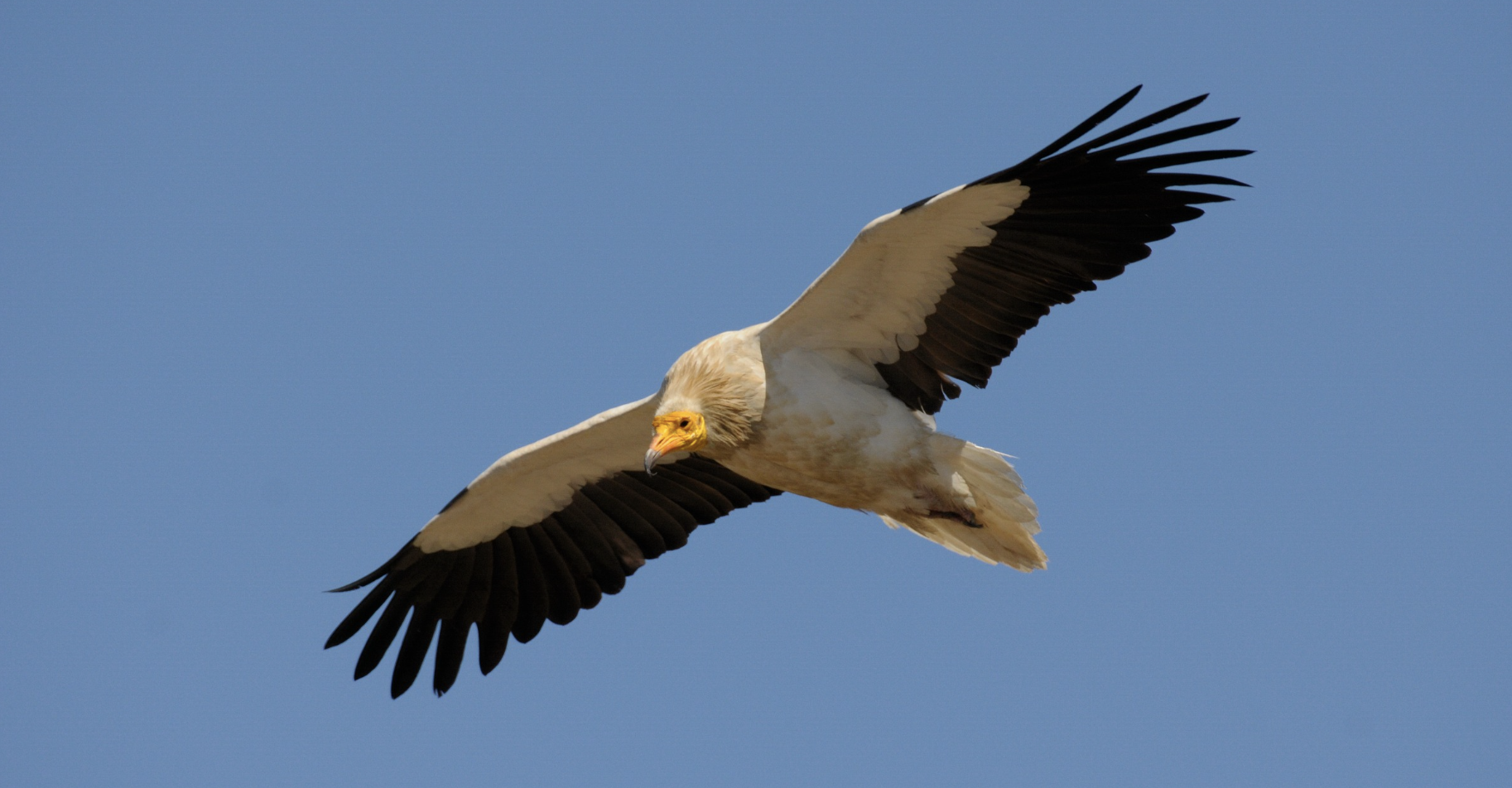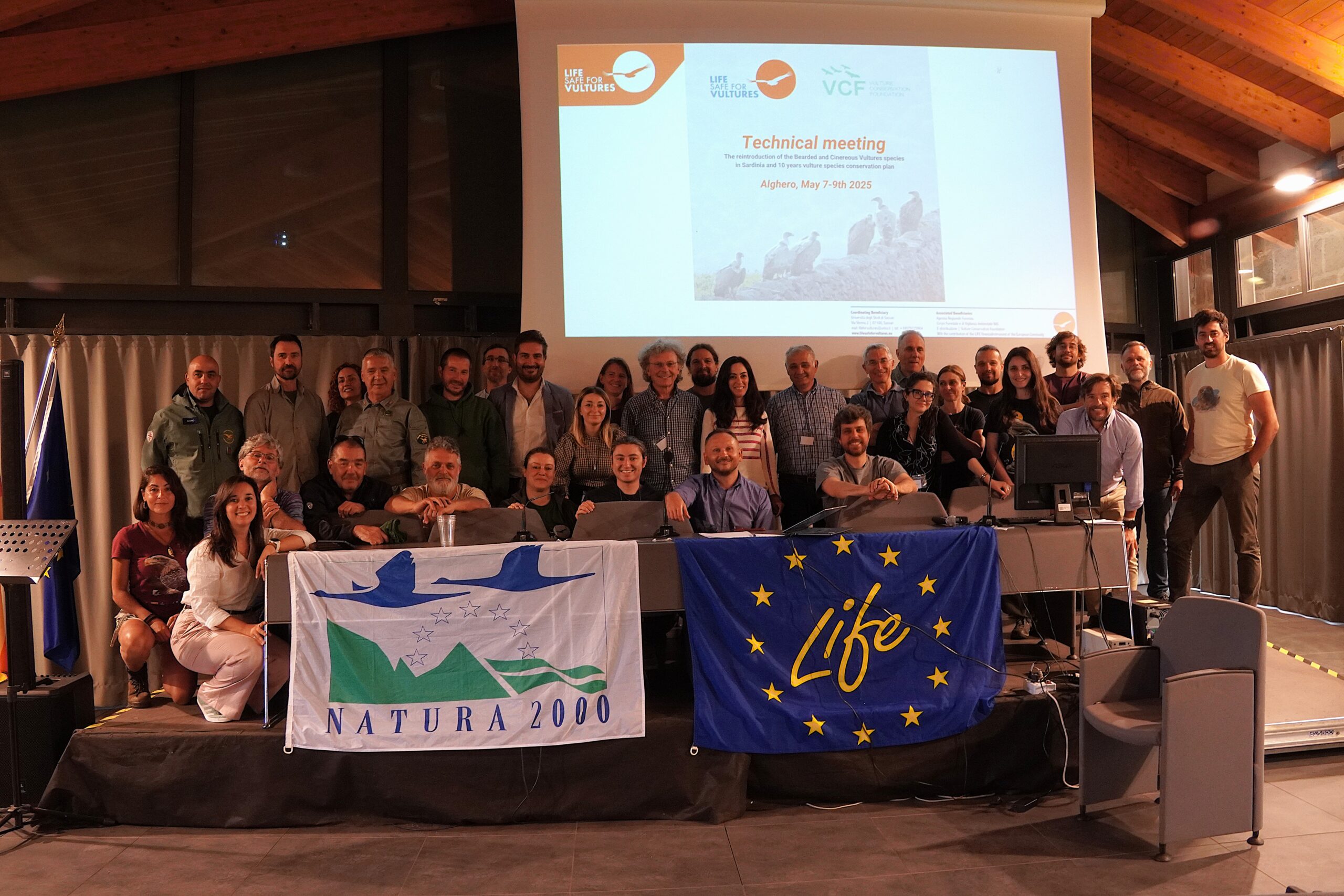
We last caught up with the captive-bred Egyptian vultures released in Bulgaria as part of the Egyptian Vulture New LIFE project as they were on their migration back in October. As they’ve reach their overwintering grounds this pilot year of releases have come to an end and we can share the results.
Releasing Egyptian vultures into the wild
The Egyptian Vulture New LIFE project the team aim to strengthen the population of Egyptian vultures in the Balkans by releasing captive-bred birds into the wild. To understand the best technique for releasing these migratory vultures we are supporting the team to carry out a comprehensive experiment to test three different release method, through hacking, fostering in wild nests and delayed release.
Egyptian vultures undertake their first migration after fledging and it is often a very perilous journey that can lead to significant mortality – in a study done with wild tagged young egyptian vultures in Bulgaria and Greece, around 70% died during the first migration, often drowning while trying to cross the Mediterranean through less conventional routes.
Over the next five years 10 birds will be released under each method and 2018 has been the pilot year for this experiment and the results will help inform future restocking programme to reinforce and boost the recovery of the Egyptian vulture population on the Balkans.
Delayed release

Launched back in March in the Eastern Rhodopes by a team of Bulgarian Society for the Protection of Birds and Green Balkans with the first method, delayed release. Four captive-bred Egyptian Vultures – Akaga, Boyana, Polya and Panteley, hatched and raised in the zoos in Prague and Jerez, Spain, were preparing for nearly two months to live in the wild in a special adaptation aviary next to a supplementary feeding station.

Once released from the aviary in May the four birds were interacting and socialising with other Egyptian vultures and seen feeding at the feeding station. All four released vultures began migration but started on different dates and were migrating alone. Akaga started migration first and used the route through Turkey and Middle East to reach Ethiopia. Polya, Boyana and Panteley started migration in late September. Polya migrated through the Greek islands reaching Crete and later again using the islands as stepping stones she reached southern Turkey and continued following the migration route through Middle East to reach Sudan. Boyana moved southwest from the release site and migrated through Greece crossing the Mediterranean Sea between Peloponnese and Libya. Panteley used similar migration route as Boyana and reached Peloponnese but he didn’t try to cross the sea towards Africa and currently is on the island of Crete.
Fostering in wild nests

At 16 days old, Blanca, was first introduced into a wild nest for fostering by wild adults back in July. However, this first attempt was unsuccessful and Blanca was taken to the Green Balkans wildlife rehabilitation centre. The team decided to attempt the wild fostering a second time and at 60 days old in August, Blanca was accepted by the wild birds and their own chick, Belgin. Both chicks successfully fledged and Blanca adapted well to the local conditions and before begining her migration she was seen feeding with other Egyptian Vultures. During her migration Blanca used the traditional migration route for Balkan Egyptian vultures, through Turkey and Middle Еast, then through the eastern Red Sea flyway reached her wintering grounds in Ethiopia. However, once she reached Ethiopia Blanca unfortunately died at the end of October. The Egyptian Vulture New LIFE team have written a full report on the bird’s death.
A team from the Ethiopian Wildlife and Natural History Society conducted a field mission to collect the GPS transmitter and to investigate the case and collect information on the reasons for the mortality and concluded that she died as the result of being injured by another animal or a human.

Her nest mate Belgin also started his migration through Turkey but when reaching the Adrasan Peninsula, he began a dangerous sea crossing and as his transmitter is no longer sending signals it’s believed he drowned.
Egyptian Vulture New LIFE
Hacking release

The last releases of the experiment took place back In August 2018 when Anna and Zikmund were released using the hacking method, involving placing the birds in an artificial nest and being fed without any human contact until they fledge. Both chicks left the nest successfully, however, neither of them visited the feeding station near the hack. Zikmund left the release site and headed to Greece but had to be captured due to his unusual behavior as he didn’t show any fear from humans and settlements. It’s believed that Zikmund was imprinted as a result of having to be hand fed for two weeks at an early age. He is currently at the Green Balkans Wildlife Rehabilitation and Breeding Centre in Stara Zagora.
Anna began her migration by choosing a perilous route, heading from Bulgaria crossing into Turkey over the Sea of Marmara through the islands of Marmara. Once in Turkey she migrated south to Andana in southern Turkey, but then got exhausted and had to be recaptured and is currently recovering in a Turkish zoo.

Overall the experiment has delivered some surprising, (delayed release was more successful than anticipated) and encouraging results. The first migration for an Egyptian Vulture is always a dangerous time for young inexperienced birds, and a good percentage of the birds survived. The work of this pilot year will help inform the direction of the future releases.
The Egyptian Vulture New LIFE team have created a full report on the results of this pilot year of testing the different release methods and recommendations of actions for the releases in 2019 and is available to download below.
The release of captive-bred Egyptian vultures in the Eastern Rhodopes in 2018 The release of captive-bred Egyptian vultures in the Eastern Rhodopes in 2018 The release of captive-bred Egyptian Vul Adobe Acrobat Document 1.2 MB Download
Egyptian Vulture New LIFE

The Egyptian Vulture New LIFE aims to reinforce the Egyptian vulture population in their Europe’s easternmost range across the Balkans. By actively managing and restocking the population by releasing captive-bred birds the project will support the small Balkan population which number between 60 and 80 pairs across the whole region. The project is working to deliver conservation measures that eliminate major known threats such as illegal poisoning and electrocution in their summer breeding grounds. Monitoring the population closely using GPS transmitters will also help the project tackle the major threats Egyptian vultures face. The Egyptian Vulture New LIFE is a partnership of organisations, led by the Bulgarian Society for the Protection of Birds and Bulgarian conservation organisation Green Balkans,from 14 countries spanning Europe, the Middle East and Africa, to protect Egyptian vultures not only in Europe but all along their migratory flyway.



